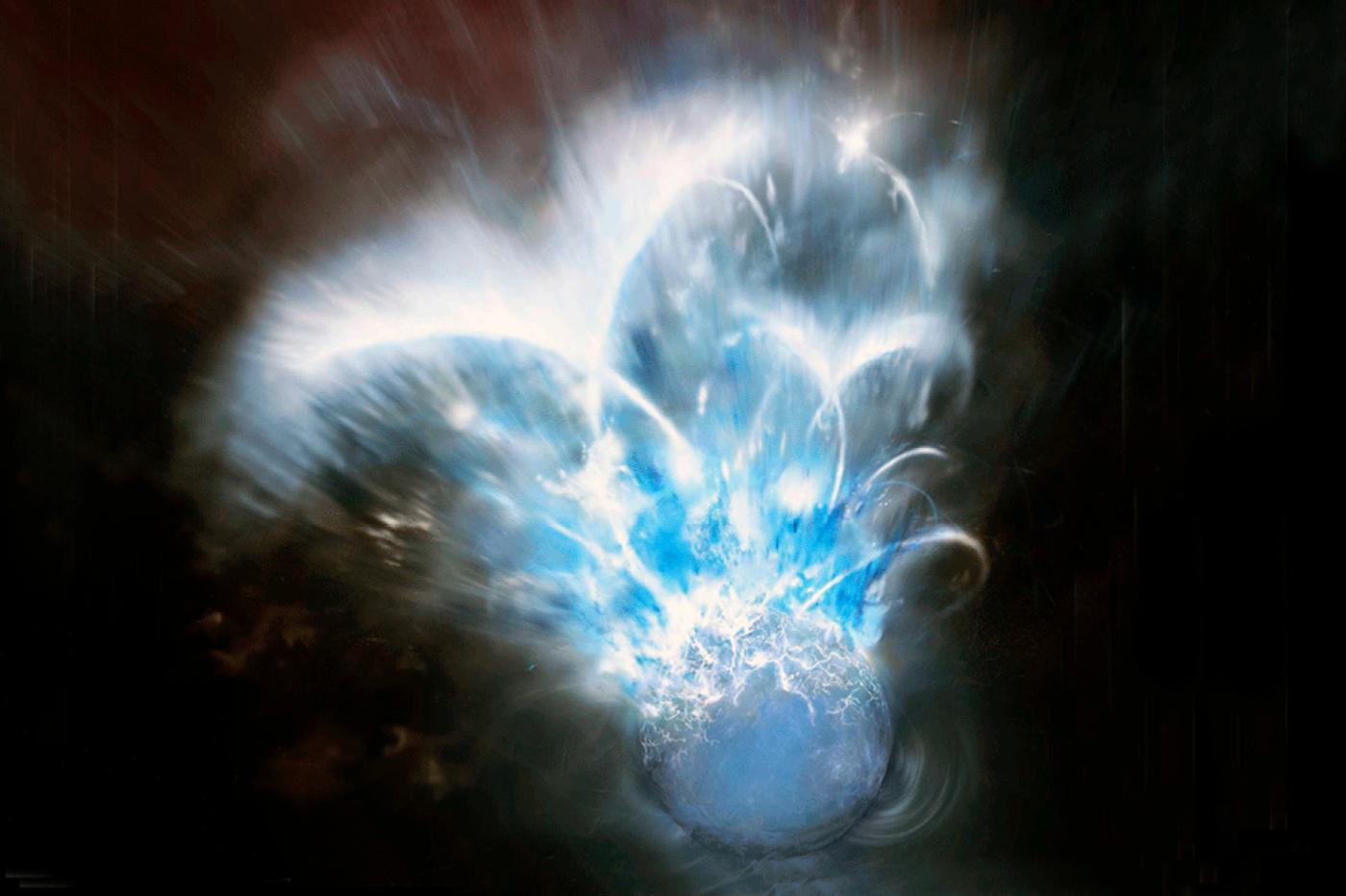
A team of researchers was able to auscultate a magnetar in the middle of an eruption that was as cataclysmic as it was instructive for science.
On our scale, our Sun seems immense and all-powerful to us; but on the scale of the cosmos, he is nevertheless a weakling. And for good reason: the universe is full of real heavyweights such as black holes or, to a lesser extent, neutron stars. These celestial bodies are ridiculously small compared to our Sun, and barely measure a few kilometers in diameter. On the other hand, an absolutely incredible mass is concentrated in this small space. They are therefore exceptionally dense, which gives them fascinating properties for astronomers.
Among the most interesting points, there are in particular the various subcategories of neutron stars. This is the case of magnetars, neutron stars which generate a overpowered magnetic field, without comparison with any other known object. They are also at the origin of large eruptions that astronomers would love to study in detail. But the problem is, these magnetars are particularly rare; only about thirty of them have been documented to date.
A titanic fireworks display
A real heartbreak for astronomers and researchers in fundamental physics, because they are fascinating objects to study. A context which makes the observation recently carried out by a team of international researchers all the more exceptional; indeed they managed to draw the portrait of a huge magnetar during the peak of an incredibly violent eruption in works spotted by Futura. A truly sensational sighting, as these events are still poorly documented.
And for good reason: these are extremely brief events that tend to be camouflaged among the countless other signals that roam the cosmos. They are therefore extremely difficult to spot. “The challenge lies in the brevity of the signal,” explains Reglero. Moreover, since it is a correlated noise, it is by definition very difficult to distinguish the signal from the cosmic diffuse background.
But this time the researchers hit the jackpot; They not only managed to measure the magnetar’s pulsations, but they did it right in the middle of the peak of the eruption. And the first element that left researchers speechless was the incredible violence of the phenomenon; this “cry in the night”Was actually a deafening howl. “The energy released was equivalent to that our Sun emits in 100,000 years”, Explains Victor Reglero, professor of astronomy and astrophysics at the University of Valencia and lead author of the study. This episode however lasted barely more than a tenth of a second!
It’s only the third eruption of this kind ever recorded, and by far the most powerful. Fortunately, if it had been smaller, it could easily have gone unnoticed 13 million light years away. The researchers would then have missed out on a set of data that is crucial for understanding these episodes.
“The energy released was equivalent to that which our Sun emits in 100,000 years ”
-Victor Reglero
Auscultate new titans
But still remains to be discovered the origin of the jolts of this “real cosmic monster”, As Reglero calls it. Right now, there is no real consensus, but rather two separate camps. Some suggest that these rashes could come from what they call “earthquakes”On the surface of the magnetars. Others believe that they originate from chain reactions triggered by a instability of the magnetic field.
But as might be expected, the data collected was insufficient to determine the exact origin of the eruptions. On the other hand, they have already provided some ideas that will greatly facilitate subsequent work, to start with the identity of one of the actors stakes; it is about the waves of Alfvén. These are waves that we could very summarily qualify as “Waves” in a plasma, and that we know relatively well since we also find them near the Sun.
The authors of the study found that oscillations detected during eruptions were consistent with the interactions between different sets of Alfvén waves; they deduced that these interactions are at the origin of a phenomenon ofinterference periodic, hence the fact that these eruptions come to us in the form of oscillations.
It is therefore an excellent start to the track; but for astronomers who work on magnetars, the Stations of the Cross have only just begun. They will obviously have to continue watching their new darling; but they will also have to look for other magnetars to maximize their chances of seeing new eruptions. An essential condition to hope to unravel the secrets of these titans who remind us of the immensity of the forces at play in the universe.
The text of the study is available here.



